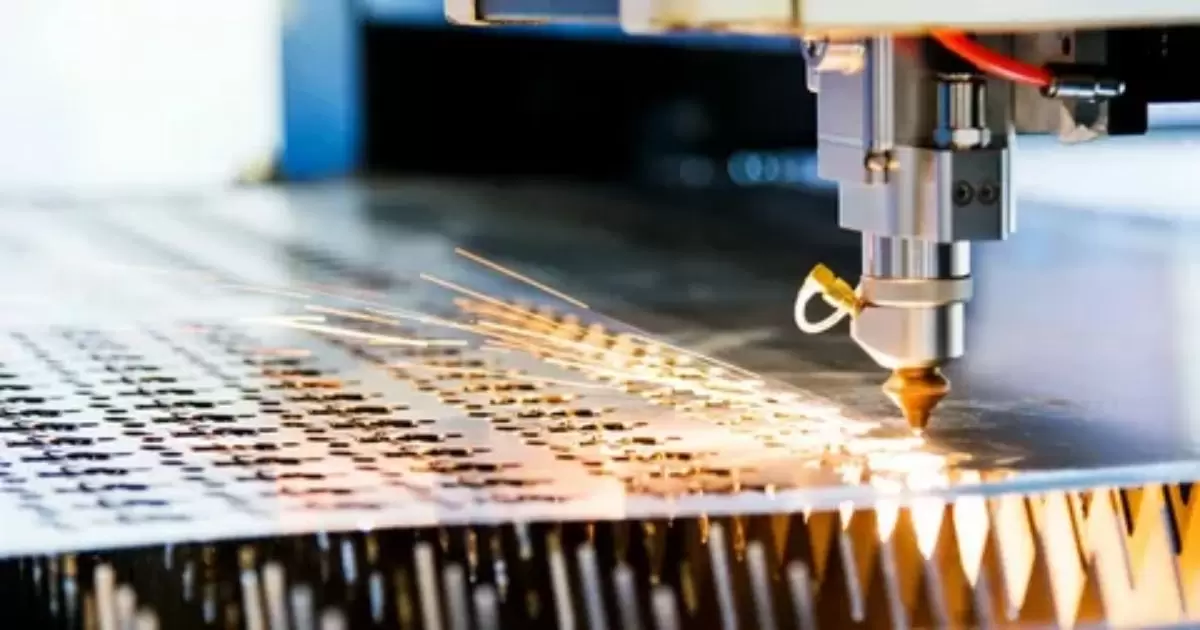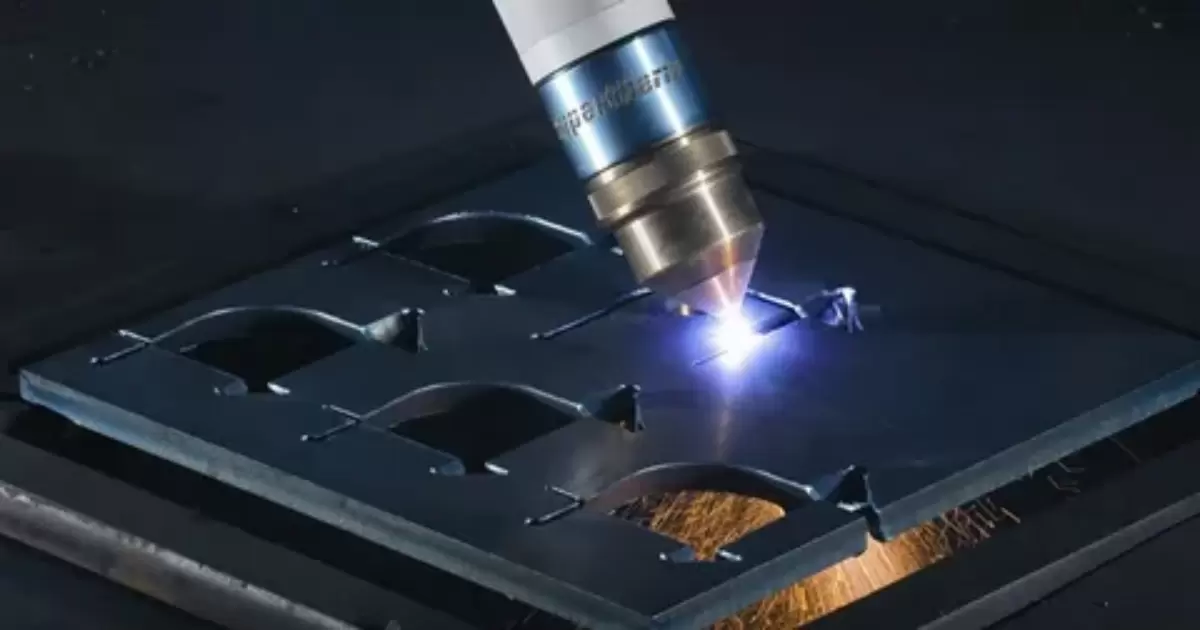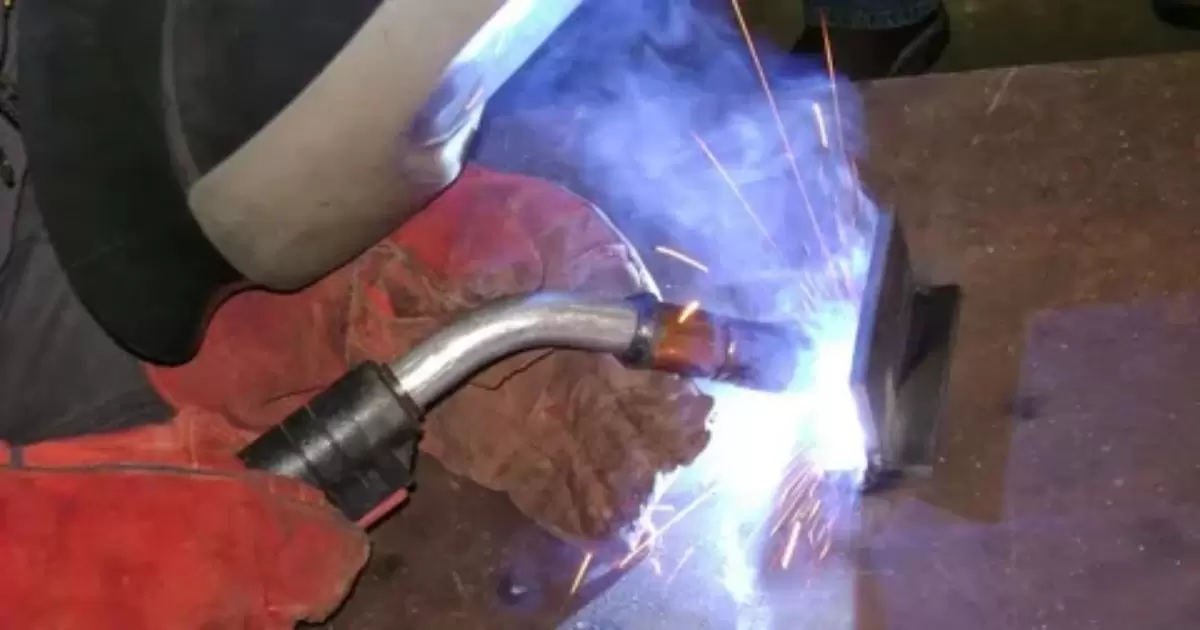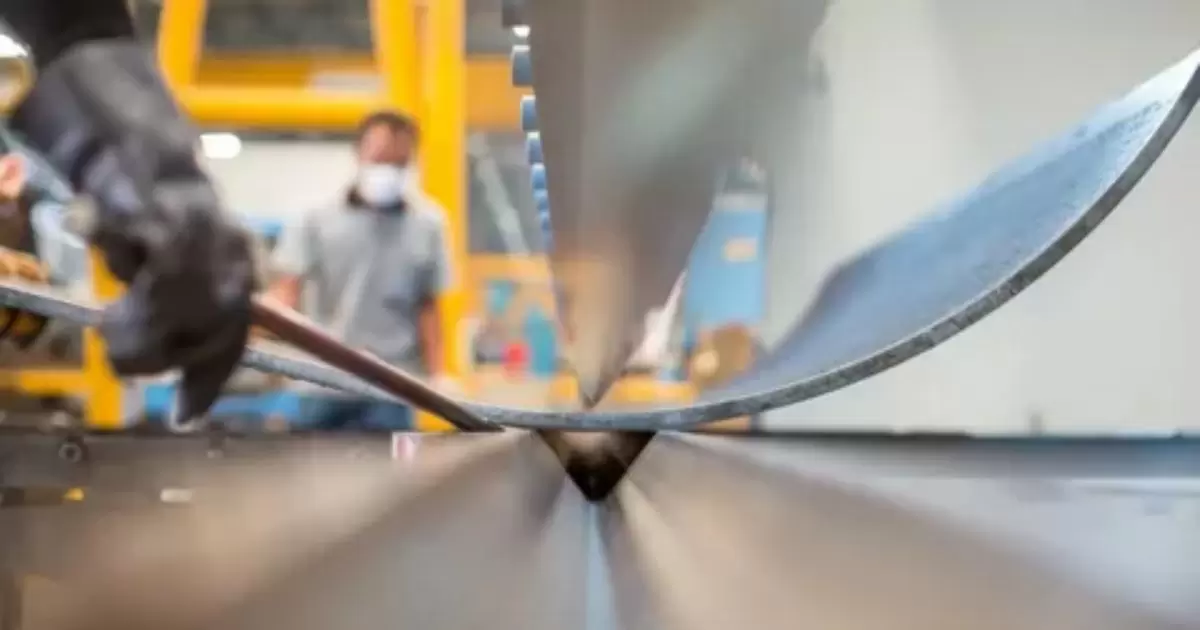Plasma cutting uses a very hot, high-energy gas called plasma to melt and cut through stainless steel. Special gases like nitrogen or argon are heated into plasma which can be over 30,000°F. This super-hot plasma melts the stainless steel so it can be cut.
Many wonder – can you plasma cut stainless steel? Stainless has properties that make it harder to cut. Even so, the right plasma cutter and technique lets you slice stainless steel cleanly. So rest assured – yes, you can plasma-cut stainless steel.
Stainless steel plasma cutting has become incredibly popular among metal fabricators in the USA. With the ability to make precise, clean cuts through all grades of stainless steel, more manufacturers are adopting this versatile cutting method for components across industries like aerospace, automation, food processing equipment, medical devices, and anywhere corrosion-resistant metal is needed.
But what exactly is plasma cutting, and can you reliably cut stainless steel with this technique? Keep reading to understand plasma’s suitability for stainless alloys and learn key tips for optimal, high-quality cuts.
Understanding Stainless Steel Grades and Plasma Cutability
There are numerous stainless steel grades used in manufacturing, which are categorized into five main families:
- Austenitic
- Ferritic
- Martensitic
- Duplex
- Precipitation Hardening
The most common stainless steel is austenitic 304 and 316 stainless, appreciated for their excellent corrosion resistance and durability. 304 makes up over 50% of all stainless produced and has applications in food processing, medical, architecture and more. 316 offers even better rust resistance thanks to molybdenum content, making it ideal for marine and other highly corrosive environments.
However, these nickel-chromium alloys have unique properties that impact plasma cutability:
- Low thermal conductivity
- High electrical resistivity
- High chrome oxide layer
This can influence cut quality and speed when plasma cutting stainless steel. Let’s look at how each factor comes into play.
How Thermal Conductivity Affects Stainless Steel Plasma Cutting
Thermal conductivity determines how easily heat travels through a metal. Stainless steel has much lower conductivity than mild steel – around 10-30% of low-carbon steel depending on grade.
This means stainless does not absorb plasma’s concentrated heat energy as quickly. Slow absorption leads to a narrower heat affected zone, but can also cause heat to build up in the cut area. Too much localized heat leads to potential backside burning, deformation, or hardened edge zones.
To combat this, operators need to reduce travel speeds by 50% or more compared to mild steel – typically 100-250mm/min for austenitics. This gives heat time to properly penetrate the cut while not overwhelming the metal.
Ferritic and martensitic stainless grades have higher conductivity, allowing faster cutting around 400mm/min. But slower speeds are still needed for alloys like 301, 304, and 316.
Electrical Resistivity’s Role in Plasma Cut stainless steel Performance
Plasma cutters work by sending an arc of electricity between an electrode and the workpiece. This arc melts metal into a focused plasma jet that cuts as you move the torch.
Stainless steel offers much higher electrical resistance compared to mild steel. Instead of conducting heat, chromium oxides form an insulating barrier making it harder for current to flow through stainless.
Since less current reaches the cut area, cutting can slow down. Electrical resistivity forces operators to use the highest current capacity possible with their plasma system to ensure sufficient heat. More amperage also compensates for crummy heat conduction.
That makes cut capacity and duty cycle vital stats to weigh when selecting a stainless-capable unit. More amps and longer high-temp runtime gives the power needed without bogging into a sluggish, melting cut.
Why Stainless Steel’s Chrome Oxide Layer Matters
Stainless owes its anti-corrosion talents to high chrome content (at least 10.5%) which spontaneously forms an invisible chromium oxide film when exposed to air. This tough film protects the metal below from moisture and chemicals.
However, chrome oxides have a much higher melting point than the base alloy. As you cut stainless steel with plasma, some molten metal solidifies too quickly and prevents new oxide barrier formation. This leaves fresh steel exposed to atmosphere and unprotected.
Rapid exposure to oxygen enables iron molecules to again bond with ambient oxygen, forming iron oxide (FeO) compounds along the cut surface. This heat tint or discoloration builds up with thicker sections, slower travel speeds, or excessive heat input.
Leaving too much excess burnt metal leads to mechanical issues and may necessitate reworking the parts afterwards through grinding or glass bead blasting. Finding optimum settings and technique prevents tinting and 8 out of 10 times leaves bright, lustrous cut edges.
Choosing the Right Plasma Cutter for Stainless Steel
| Plasma Cutter Features | Recommendations for Stainless Steel |
| Amperage | Minimum of 30 amps, with 80+ amps best for thicker stainless steel |
| Duty Cycle | At least 60%, with 100% preferred for extended stainless cutting |
| Arc Starting Type | High frequency starting for reliability in starting arc |
| Tip Size | Larger tips optimized for thicker stainless alloys |
| Consumables | High quality specialty tips designed for stainless steel |
| Air Filtration | Built-in air filtration for air plasma cutters |
| Gas Supply | Plasma cutters using oxygen provide high cutting temps |
| Portability | Lightweight handheld for ease of cutting stainless sheets |
| Cut Control | Hand torches or CNC tables allow precise cut placement |
| Price Range | $800 – $5,000 range typical for stainless steel use |
Cutting austenitic, duplex or precipitation hardened stainless demands a plasma cutter with sufficient output. Look for key criteria like:
- Output of at least 60 amps – Minimum rated output recommended for reasonable stainless cuts
- Ideal output of 80-200 amps – Delivers the best blend of cut speed, edge quality, and versatility for stainless steels
- High duty cycle at max amps – Enables making lengthy or repeated cuts without overheating; 50%+ cycle time is good
- Operating air pressure around 65-85 psi – Provides good plasma power and cut speed balanced with nozzle life
Many top manufacturers like Hypertherm and Thermal Dynamics now offer compact inverter plasma cutters optimized for stainless service in the 80-105 amp range. Units include:
- Hypertherm Powermax45 XP – 88 amps, 50% duty cycle
- Thermal Dynamics CutMaster 102i – 105 amps, 60% duty cycle
- Lincoln Electric Tomahawk 1000 – 100 amps, 50% duty cycle
These pack ample cutting power in a portable size – some under 40 pounds – for easy transport around the shop or field work. Their protection technologies allow running off 120/240V power or portable generators.
When evaluating potential stainless plasma cutter picks, seek additional features that aid cut performance like:
- Smart voltage regulation – Maintains arc consistency despite electrical resistance
- Drag-cutting consumables – Extends nozzle and electrode life via reduced contact
- FineFocus or X-Definition technologies – Deliver very narrow kerfs and nice edge quality
- Automatic gas control – Regulates clean shield gas flow to prevent backside oxidation
Units offering extra capabilities like gouging or mechanized cutting can maximize utility. But the power supply, torch and cables must have specs rated for stainless service first and foremost.
Setting Up Your Plasma Cutter for Stainless Success
While modern inverter plasma cutters simplify setup with quick connects and manual pressure controls, getting perfect stainless cuts relies upon:
-
Confirming pressure & current settings match metal thickness
- Thicker sections logically need more cutting power to slice through the beefier cross section.
- But higher plasma amperages also require higher air pressure to focus and propel the intensified arc.
- An 80 amp cut may use just 65 psi on sheet metal, but thick plate could demand 80+ psi to cut cleanly.
- Consult your operators manual – settings charts suggest gas pressures suited for each amp setting.
- If available, use the thicker stainless recommendations rather than mild steel settings.
- This balances cut speed with nozzle life. Too little pressure causes quicker wear while overpushing psi melts consumables faster under sheer plasma force.
-
Choosing the appropriate plasma torch consumables
- Use a high capacity torch designed to handle elevated amperages and shield gas flow
- Select smaller diameter copper nozzles focused on tighter plasma flow
- Match with finer shield cups to constrict the plasma arc
- Consider multi-hole deflector nozzles that displace heat off-axis for faster cuts with less discoloration
- Drag or flush cutting consumables further reduce heat buildup
-
Having extra consumables on hand
- Stainless steels cut faster wear than mild steel; the chrome oxides erode components quicker
- Keep extras of items prone to wear like electrodes, nozzles and shields
- Monitor for wear monthly or biweekly during heavy use, replacing well before failure
- Consider consumable variety packs suited to your unit’s amp range
-
Employing proper ventilation and personal protective equipment (PPE)
- Stainless steel fumes require exterior ventilation or portable smoke collectors
- Even cold rolled steel has hexavalent chromium (CrVI) levels requiring OSHA monitoring
- Use proper respirators, eye/face shields, leather gloves, cotton/flameproof jackets, ear protection
- Have a welding jacket, fire extinguisher, and first aid kit on hand
Technique Tips for High-Quality Plasma Cuts in Stainless Steel
Taking the time to master stainless specific technique ensures precise, square edges cut 5 times faster than abrasive with smoother custom metal fabrication:
Travel Speed
- Cut at around 15 inches/minute on 1/4″ thick austenitic stainless like 304 or 316
- Thicker sections may require dropping to 10 ipm or making multiple slower passes
- Ferritics and martensitics can cut faster – start around 25 ipm and adjust accordingly
- On sheet metal try speeds closer to 30+ ipm
Torch Angle
- Hold torch at 35-45° push angle to molten metal with around 1/16″ standoff
- Maintain perpendicular angle to cut line for accurate tracks
- Adjust angle to achieve vertical walls on be
FAQ’s
Is stainless steel harder to cut than mild steel?
Yes, stainless steel’s strength and corrosion resistance make it more difficult to penetrate with plasma cutters.
What thickness of stainless steel can a plasma cutter handle?
Plasma cutters can typically cut stainless steel up to 1 inch thick, depending on amperage and cut speed.
Do you need special tips to cut stainless steel?
Using high amperage specialty tips optimized for stainless steel will improve cut quality and tip life.
What gases work best for cutting stainless steel?
Oxygen and air plasma cutting provide the high temperatures needed for getting clean cuts in stainless steel.
Does stainless steel need to be preheated before plasma cutting?
Preheating stainless steel before plasma cutting can help reduce part warping and cracking in thicker materials.
Conclusion
Plasma cutting works on stainless steel. Plasma cutters create very high heat similar to a lightning bolt. This heat melts and cuts through the metal. Stainless steel is hard and tough. But it can still be can you plasma cut stainless steel like mild steel.
Are there challenges with trying to can you plasma cut stainless steel? Yes, there are some. You need a very hot plasma arc. And the right amperage for the stainless thickness. But with practice, most plasma operators can cut stainless steel nicely. Proper setup helps a lot too. Preheating also helps for clean cuts in thick stainless steel. So you can plasma-cut stainless steel. And it allows fast cutting versus other methods.



